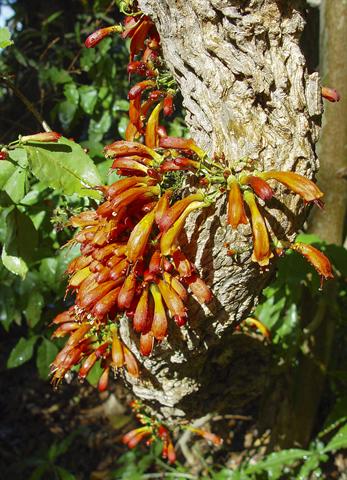By choosing trees, shrubs and flowers that offer fruit and nectar, you can make your garden the local birds’ destination of choice
TREES
The size of your garden will dictate the height, spread and number of trees you plant. Planting a tree is a really long-term investment, so give it lots of thought. Many birds enjoy a tall tree as a lookout spot; birds such as the Black-headed Oriole prefer life high in the canopy, but don’t be tempted by a large tree if yours is a small garden. Always keep the scale of your garden in mind – one of your neighbours will probably have a tall tree ‘your’ birds can use, while you plant one in keeping with the size of your garden.
Then there’s the choice of deciduous or evergreen. If you’re lucky enough to have a large garden consider growing a little forest (an assortment of trees that actually touch when mature); if you live in the vicinity of a real forest, birds such as the Chorister Robin-Chat and Southern Boubou might soon call your forest ‘home’.
GOOD CHOICES:
- Tree fuchsia (Halleria lucida) has orange-red tubular flowers for nectar-lovers and small fleshy fruits for frugivores.
- Perdepis (Clausena anisata) is a delightful small tree with white flowers that attract insects and insectivores; it has blackish-red fruits for the frugivores.
- Cheesewood (Pittosporum viridiflorum) is a small, evergreen tree with pretty, scented creamy yellow flowers and fruit that splits open to reveal seeds wrapped in appetising red jelly for frugivores.
- Coral tree (Erythrina lysistemon) has amazing red flowers that attract nectar lovers from far and wide (only plant in frost-free zones).
- Mountain bottlebrush (Greyia sutherlandii). Scarlet bottlebrushes offer nectar to sunbirds and many others in colder regions.
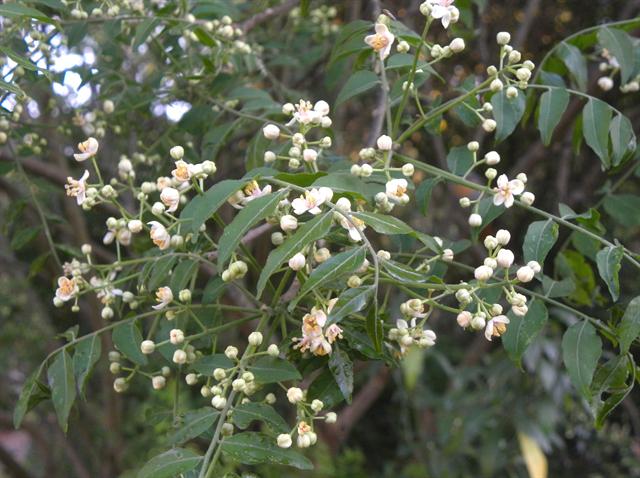
SHRUBS
Shrubbery is an important part of any bird garden; here you can offer fruit, nectar, and without really trying, a lot of insects for birds to feed on. This is where the little warblers and white-eyes, sunbirds and boubous will fossick happily finding all manner of tasty treats. Where the shrubbery meets the lawn or flowerbed, robins and thrushes will stake their claim; the open spaces, the lawn in most cases, will be where flycatchers and drongos search for prey from a prominent perch.
GOOD CHOICES:
- Wild pomegranate (Burchellia bubalina) bears delightful clusters of red tubular flowers that attract nectar feeders and bulbuls and starlings relish the seeds that appear later.
- Mickey Mouse bush (Ochna serrulata) puts on a glorious spring show of yellow flowers followed by a brilliant splash of red; the calyx turns from green to red and holds the black seeds – a treat for all small frugivores.
- Cape rattle-pod (Crotalaria capensis) has nectar aplenty in the drooping sprays of large yellow pea-flowers that attract sunbirds and sugarbirds.
- Bride’s bush (Pavetta lanceolata) has white flowers that attract insects and its black berries are a treat for frugivores.
- Pink plume (Syncolostemon densiflorus) has gorgeous pink flowers with nectar for the sunbirds.
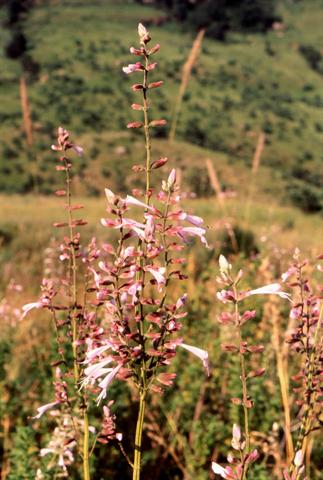
PERENNIALS AND CLIMBERS
A tangle of creepers is the perfect place to build a nest. To encourage birds to
do this, festoon a garden arch with traveller’s joy (Clematis brachiata) or canary creeper (Senecio tamoides).
GOOD CHOICES:
- Aloes and red-hot pokers are cheerful and bright additions to the garden and are loved by sunbirds, sugarbirds and nectar robbers such as Streaky-headed Seedeaters.
- Wild dagga (Leonotis leonurus) has the lovely Zulu name of ‘bird’s beer’ – most apt, as the flowers are irresistible to nectar lovers.
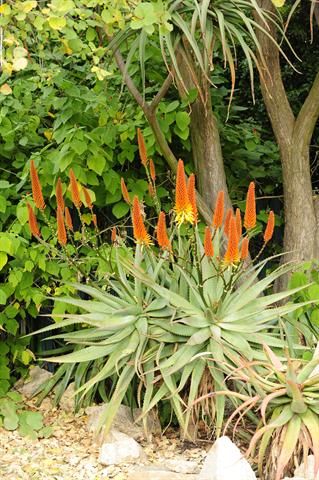
TO FEED OR NOT TO FEED?
“I know not everyone approves of feeding birds,” says Sally, “but I’m totally in favour of it. It’s not easy to attract seed-eating birds such as bishops, widows, whydahs and weavers to your garden without offering them wild bird seed and most of our gardens are far too small to plant large patches of seeding grass. The pleasure we get from their antics and flamboyant breeding plumage by feeding them is worth it. Fresh fruit and minced suet have the barbets, white-eyes, bulbuls and many others queuing up. I personally don’t like feeding them cheese (it has too many unnatural additives), but I know some people who’ve fed their robins cheese for years with no bad effects at all. When you go on holiday, the birds just go next door or down the road to another feeding station.”
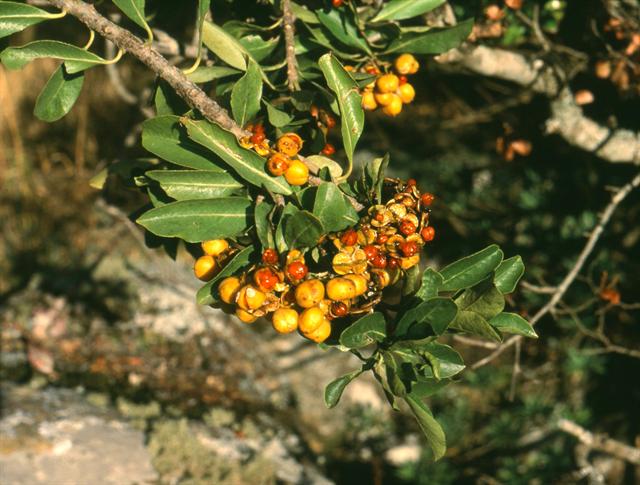
HOME TO ROOST
If you have a favourite tree that doesn’t provide fruit or nectar, it can still provide a shelter or nest site. Dense leafy trees give wonderful protection from heavy rain and provide a great place to spend the night. Here birds can hide from a prowling cat or circling raptor. Many birds like a secluded spot to build their nest; thorny branches are often a favourite as predators find them difficult to negotiate. There are birds that actually like to nest in hanging baskets right next to the house; wagtails and robins are well known for this, as they feel secure under the homeowners’ protection.
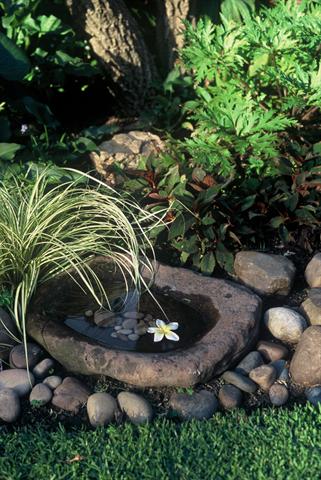
LIQUID REFRESHMENT
Water for drinking and bathing is another facet of bird garden planning. Birdbaths come in all shapes and sizes, from the store-bought conventional ones to a genuine grindstone or simply the round shallow dishes one buys to stand a pot in. “Don’t have just one bath. I have nine in my garden,” says Sally, “you’ll find there’s segregation when bathing: one set of birds will use one spot, while others prefer another. It’s important the water in the bath is shallow; always remember that birds have short legs and don’t want to flounder out of their depth.”

